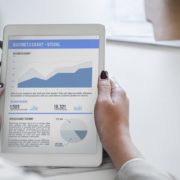The Importance of AMP “accelerated mobile performance” A site must be mobile-friendly

AMP is a new open source initiative that stands for Accelerated Mobile Pages. AMP is meant to improve the web browsing experience by decreasing page load times and is Mobile friendly.
Here are a few of the most exciting advantages of AMP:
- It speeds up website load time
According to a study from Google, 53% of website visits are abandoned if a mobile site takes longer than 3 seconds to load. AMP has a set of standards which all contribute to decreased page load time. A few of these guidelines include asynchronous JavaScript, resources sized statically (such as images and ads), only inline CSS, etc. Page load times have been shown to have a great influence on traffic and user engagement and are always a very important measurement for site owners to be monitoring.
- Enhanced SEO
As the web becomes increasingly mobile, it is important for publishers to pay attention to their search rankings beyond the desktop browser. Because page load time is already a factor in SEO, and since this initiative is being speared by Google, AMP pages will eventually be prioritized in their search algorithms and have a positive effect on SERPs.
- Low bounce rate
A great side effect of faster loading pages is that your visitors are less likely to leave. Publishers who implement AMP should see a decreased bounce rate and most likely overall increased time spent on site stats.
- The potential for increased ad views
Because the HTML is coded in a way to enhance the overall usability of banners and images, there should be a higher ad view-ability rate, hopefully also increasing a publisher’s ability to monetize their site.
Please contact Savvy Sister to evaluate your website to see if it is a good candidate for AMP.






